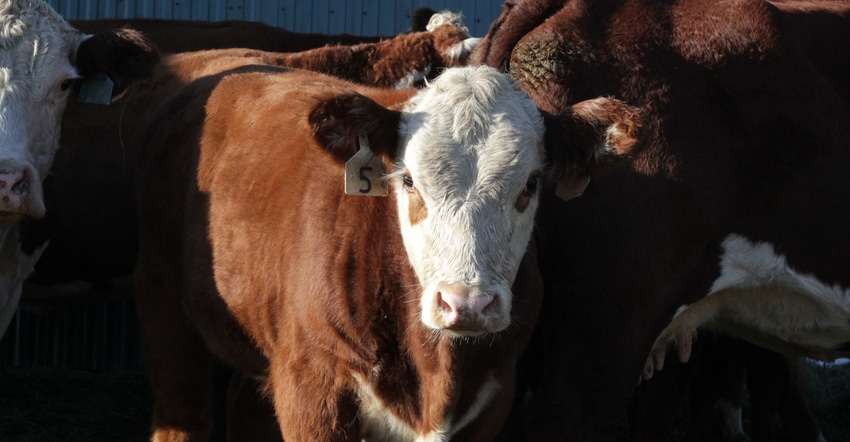Either fence-line or two-step weaning can ensure a smooth transition for calves to improve performance.
October 27, 2022

Weaning may be one of the most stressful times in a calf’s life. Calves may consume less feed and water, which results in poor nutrition. The stress can also depress the immune system, increasing the risk for sickness or death. Any opportunity to reduce the stress contributes to improved health and performance of calves, both during and after weaning.
Typical weaning involving the abrupt removal of the calf from the cow will create a highly stressful situation. Any weaning process that makes the separation more gradual will reduce the stress and potentially improve the calf’s health and performance. Examples of low-stress weaning methods include fence line and two-step weaning.
Fence-line weaning
Fence-line weaning methods are most frequently used in a pasture to decrease stress on the calves. Research in Utah indicated that fence-line weaned calves vocalized less, spent more time eating and had greater weight gains compared to calves that were abruptly separated from their dams. The increased weight gain was maintained through a 10-week time frame post-weaning.
Research in Michigan supported the increased performance for the first 14 days and lower serum haptoglobin levels at the fifth day. However, this performance did not continue through the study, and there were no sustained performance differences based on the weaning method. Haptoglobin is an indicator of stress and is often present in the blood following a stressful event. Thus, lower serum haptoglobin in fence-line weaned calves indicates they were less stressed after weaning.
An additional study in Michigan evaluated calf behavior and found that the fence-line and two-step weaning methods appear to be less stressful on calves compared to abrupt weaning methods.
For fence-line weaning to be effective, follow these steps:
Place pairs in pasture where calves will remain after weaning so they’re familiar with fences and water.
Upon weaning, place cows in adjacent pasture for calves to see, hear and smell them, but not nurse.
Modifications to fences may be needed to ensure the cows and calves remain separated. Fencing could be:
A simple five-strand barbwire fence or a barbwire fence with a single offset electric wire to ensure calves cannot reach through and nurse.
It may be valuable to place a cull cow or yearling with the calves to decrease the amount they walk fences. After a few days the cows and calves will move farther away from the fence and not be as concerned about being weaned.
2-step weaning
Two-step weaning is another option for decreasing stress on the calves. The two-step process uses plastic nose tags that prevent the calves from nursing while they are in the same pasture as their dams. The calves are still able to eat forage and drink water.
The two steps to this process are:
Place plastic nose tags in all calves for four to seven days. Ensure tags are placed correctly.
After that period, remove the plastic nose tag and move the cows to a remote location.
Research from Canada shows that calves with nose tags do not bawl or walk any more than calves without nose tags. They also spend as much time eating each day during the time the nose tags are in. When the dams leave, bawling or walking by calves does not increase compared to the first step, or prior to inserting the nose tags.
Meanwhile, contemporaries that were abruptly weaned in the Canadian studies displayed dramatic increases in bawling and walking during the weaning process.
As indicated above, research in Michigan found two-step weaning as less stressful than abrupt weaning. Whether this reduced stress leads to long-term improvement in health and performance appears to be unknown and requires additional research.
Less stressful weaning not only is an improvement for the calves, but also may be less stressful for cattle producers by having quieter cattle.
Source: South Dakota State University Extension
You May Also Like



